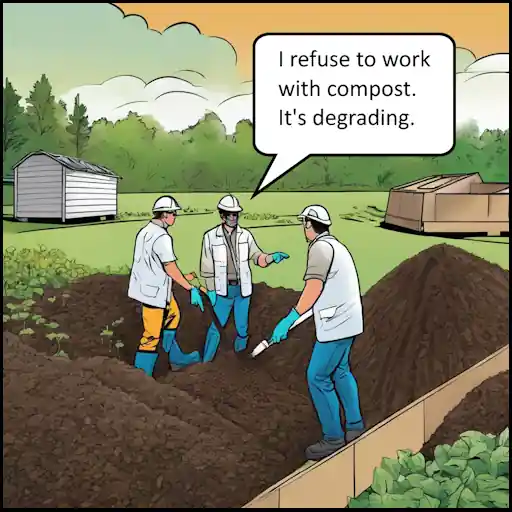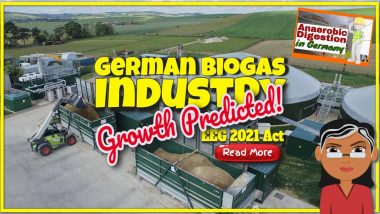Take care! “Electric Kitchen Composters” are not what their name suggests them to be.
In the realm of sustainable living and waste management, the distinction between traditional composting and modern food waste dehydrators is often blurred. Recent discussions by BioCycle columnists Sally Brown and Ron Alexander have highlighted the issue: many in-home food waste dehydrators are marketed as “electric kitchen composters,” leading to consumer confusion.
This article aims to clarify the differences and provide insight into the appropriate use of these technologies.
[boomdevs_toc]
Understanding Traditional Composting
Definition and Process
- What is Composting?
- A biological process involving the decomposition of organic matter under controlled conditions.
- Microorganisms such as bacteria, fungi, and others break down organic material into simpler substances.
Benefits of Composting
- Soil Health: Enriches soil with nutrients, improving plant growth.
- Waste Management: Reduces the amount of waste sent to landfills.
- Environmental Impact: Decreases greenhouse gas emissions by avoiding methane production in landfills.
Key Components of Composting
- Organic Matter: Food scraps, leaves, grass clippings, etc.
- Microorganisms: Bacteria, fungi, and other decomposers.
- Aeration: Oxygen is crucial for aerobic decomposition.
- Moisture: Adequate moisture levels are essential for microbial activity.

The Rise of Food Waste Dehydrators
Functionality
- Operation Principle: These devices dehydrate food waste, reducing its volume and weight.
- Process: They do not involve microbial decomposition but rather remove moisture through heat and air circulation.
Misconceptions
- Marketing as Composters: Some brands label these devices as composters, which is misleading.
- Product Outcome: The end product is dehydrated food waste, not compost in the traditional sense.
Comparing Traditional Composting and Dehydrators
| Feature | Traditional Composting | Food Waste Dehydrators |
|---|---|---|
| Process | Biological Decomposition | Dehydration |
| End Product | Compost (nutrient-rich) | Dehydrated waste |
| Time Frame | Weeks to months | Hours to days |
| Environmental Impact | Reduces methane emission | Reduces waste volume |
| Use in Gardening | Yes (soil amendment) | Limited |
Consumer Guidance
Choosing the Right Option
- Assess Needs: Consider whether you're seeking to reduce waste volume or produce compost for gardening.
- Space and Time: Traditional composting requires more space and time than dehydrators.
Impact on Sustainable Living
- Dehydrators: Useful for reducing waste volume, especially in urban settings.
- Composting: More beneficial for soil health and garden use.
Recent advancements in technology have led to the development of electric food dehydrators, which are often mistakenly referred to as “composters.” The first commercial installations of such food dehydration units date back nearly a decade, starting in Las Vegas.
BioCycle has repeatedly noted that these dehydrators are promising for entities like restaurants and food wholesalers, effectively reducing the volume, moisture content, and odour of food waste. Consequently, these units have been scaled down for residential use.

For homeowners who want a less messy way to handle their food scraps, these devices can be quite effective, and capable of reducing food waste volume by up to 90% through external heating. Since food waste typically contains a lot of moisture, the dehydrators operate at temperatures ranging from 165° to 275° F over 4 to 20 hours, resulting in a final product with less than 10% moisture content.
Some models suggest the addition of microbial or enzyme treatments. However, it's improbable that these additives can significantly hasten biological degradation and stabilization in the challenging conditions inside the dehydrators — namely, high heat and low moisture. Moreover, the short treatment duration of 4 to 20 hours makes it unlikely for enzymes to substantially influence biological degradation.
In other words, these devices may dry the waste out, but once the moisture returns, the material from these devices will rot and smell very much in the same ways as before the dehydration.
What Is And What Is Not Compost
A key attribute of high-quality compost is that it undergoes microbial decomposition over a sufficient duration, leading to a marked reduction in volatile solids. This process indicates biologic carbon stabilization, ensuring the material no longer attracts vectors (pests like insects and rodents), making it unlikely to regrow pathogens when at the right moisture level.
This understanding of compost goes back to research conducted at the USDA Agricultural Research Laboratory in Beltsville, Maryland, in the late 1970s. Additionally, the USEPA 40CFR Part 503 biosolids regulations stipulate a minimum of 38% reduction in volatile solids mass for vector attraction reduction.
According to The Ohio State University’s Compost Operator Education Course Book, the loss of volatile solids during composting can range from 30% for leaves to up to 90% for food wastes.
In 2018, the American Association of Plant Food Control Officials (AAPFCO) set a new standard for compost, clarifying its definition:
What True Compost Is
The word compost when used correctly is the product manufactured through controlled aerobic, biological decomposition of biodegradable materials. The process involves mesophilic and thermophilic temperatures, significantly reducing the viability of pathogens and weed seeds, and stabilizes the carbon, making it beneficial for plant growth.
Compost is primarily used as a soil amendment but can also provide plant nutrients.
See the US AAPFCO Definition – 2018 here. The CIWM in the UK provides a definition and a comprehensive guide to compost here.
This definition is crucial, as it provides a clear framework against which the claims of new food waste processing technologies can be evaluated.
It's essential to understand that the output from food waste dehydrators should not be confused with or equated to compost, nor should it be assumed to serve the same purposes as compost.
Conclusion
While food waste dehydrators can play a role in waste reduction, they should not be confused with traditional composting methods.
The potential of kitchen and commercial food dehydration tools in addressing food recovery and recycling logistics, along with diminishing the ‘yuck' factor, is evident. However, it seems that sufficient research and development have not yet been done to effectively manage and determine the final use of the end product.
It is overly simplistic and potentially misleading to label this product as “compost” or suggest that it is compost by marketing these devices as “composters.” Additionally, calling it a soil amendment, fertilizer, or dirt without a thorough investigation into its ultimate application is precarious.
Such practices could harm the credibility of both genuine compost and the food dehydration devices themselves.
Understanding the distinction helps consumers make more informed decisions aligned with their sustainability goals. As the conversation around waste management evolves, clarity and education are key to ensuring that environmental impacts are accurately understood and addressed.
Further Reading:
- BioCycle Magazine: Explore articles by Sally Brown and Ron Alexander for more insights.
- EPA Guide to Composting: Learn about composting basics and benefits.
Frequently Asked Questions (FAQs) About Electric Kitchen Composters and Food Waste Management
What is an Electric Kitchen Composter?
A: An electric kitchen composter is a device that dehydrates food waste, reducing its volume and weight. It uses heat and air circulation to dry out food scraps, which is different from the biological process of traditional composting.
How Does Traditional Composting Work?
A: Traditional composting is a natural process where organic matter (like food scraps and yard waste) is broken down by microorganisms into a nutrient-rich material. It requires a balance of organic matter, microorganisms, air, and moisture, and typically takes several weeks to months.
What are the Benefits of Traditional Composting?
A: Benefits of traditional composting include:
- Enriching soil with nutrients, is beneficial for gardening and agriculture.
- Reducing the volume of waste sent to landfills.
- Lowering greenhouse gas emissions, particularly methane from landfills.
Can Electric Kitchen Composters Produce Compost?
A: No, electric kitchen composters do not produce traditional compost. They dehydrate food waste, which is different from the compost produced through biological decomposition in traditional composting.
Are Electric Kitchen Composters Environmentally Friendly?
A: Electric kitchen composters are environmentally friendly in the sense that they help reduce the volume of food waste. However, they do not provide the same environmental benefits as traditional composting, such as soil enrichment and a significant reduction in greenhouse gas emissions.
Is the Output from Electric Kitchen Composters Usable in Gardens?
A: The output from electric kitchen composters is dehydrated food waste, not nutrient-rich compost. Its usefulness in gardens is limited compared to traditional compost.
How Do I Choose Between a Composter and a Dehydrator?
A: The choice depends on your needs:
- If you want to produce nutrient-rich compost for gardening, choose traditional composting.
- If your main goal is to reduce food waste volume, especially in limited space, an electric kitchen composter might be more suitable.
Are There Any Misconceptions About Electric Kitchen Composters?
A: A common misconception is that electric kitchen composters produce compost. They actually dehydrate food waste, which is different from the compost produced in traditional composting.
Can Electric Kitchen Composters Help with Waste Management?
A: Yes, they can help with waste management by reducing the volume and weight of food waste, which can be beneficial in urban settings or households with limited space for traditional composting.
They can be useful for the occupants of high-rise buildings where there are no communal provisions for separate collection and recycling of food waste. They may have a function on-board ships when operated to a policy of zero discharge to sea.




